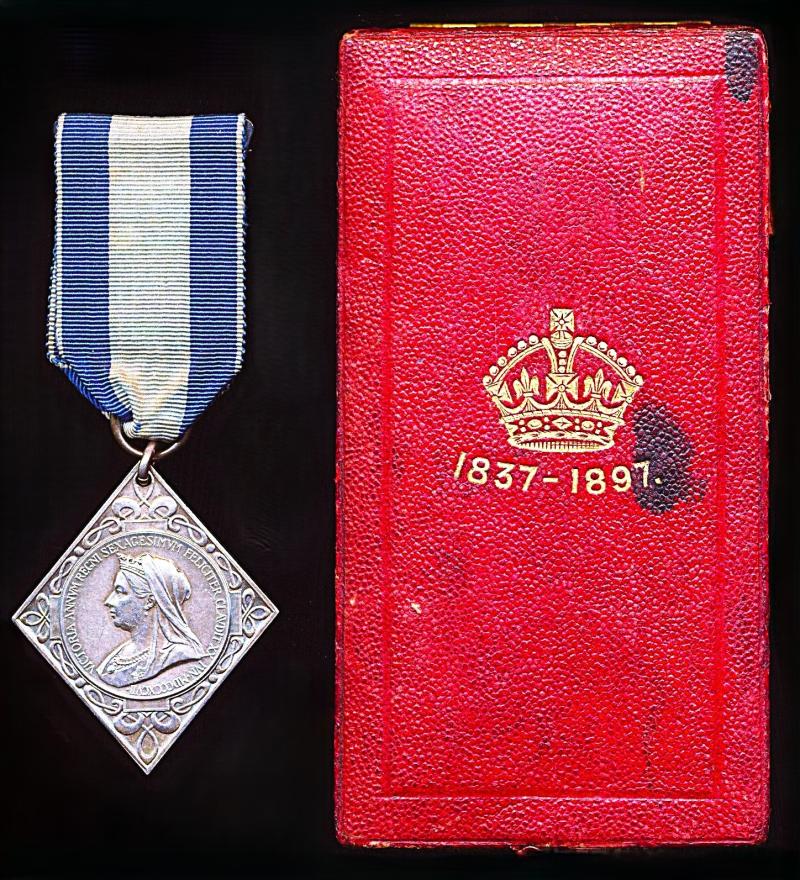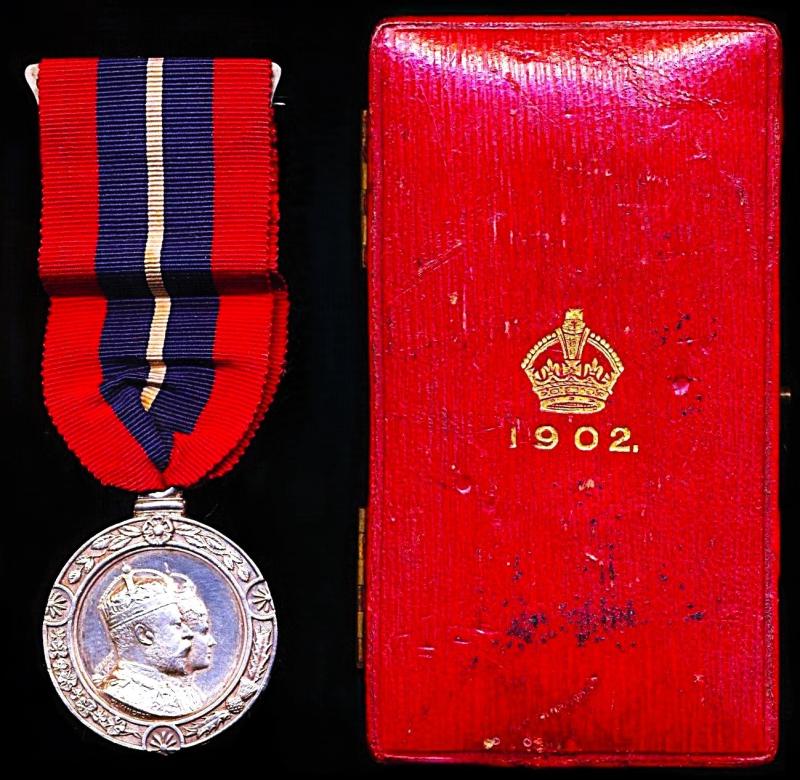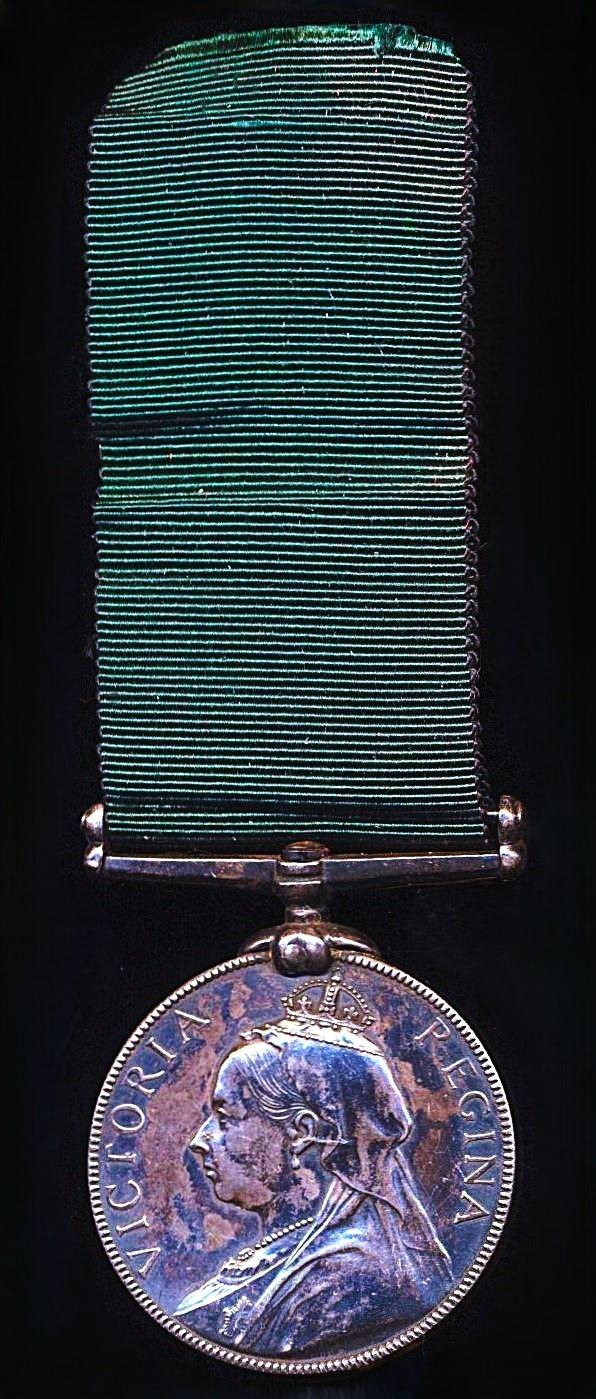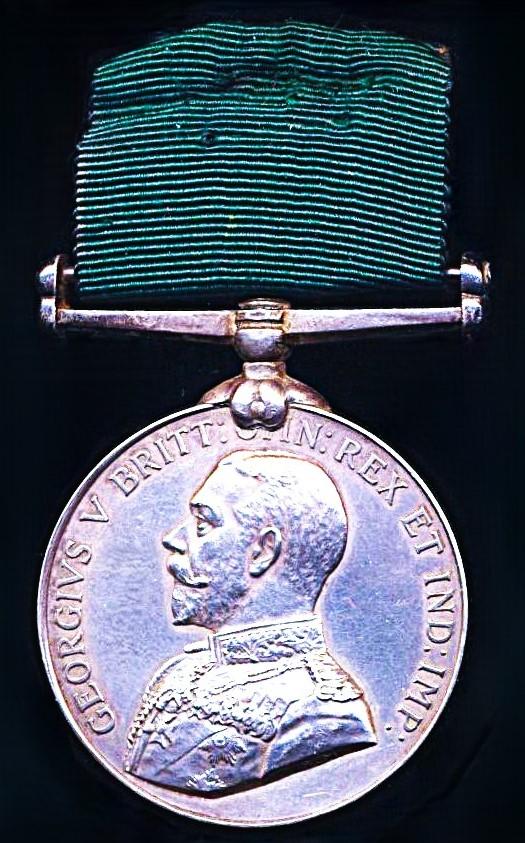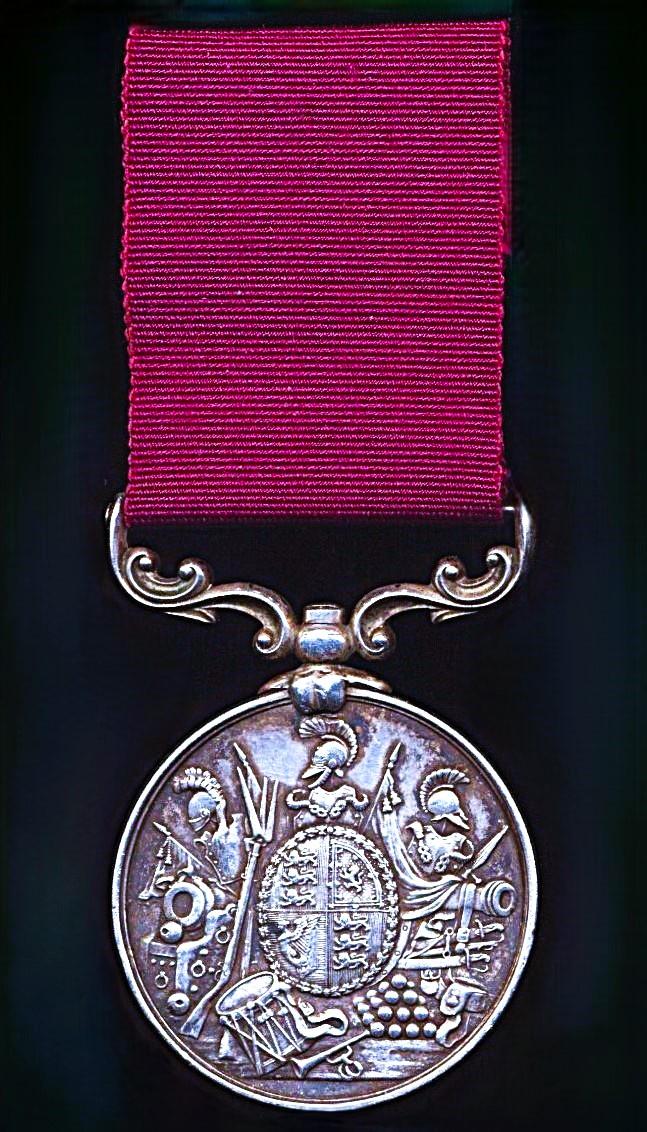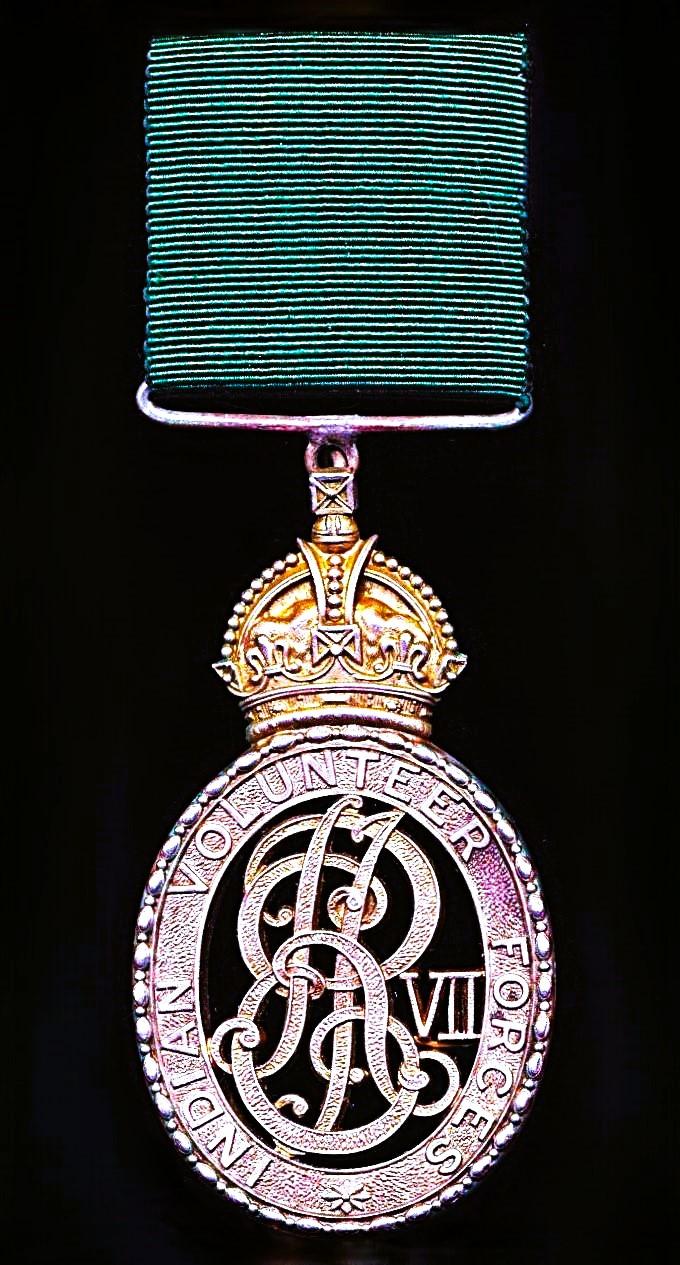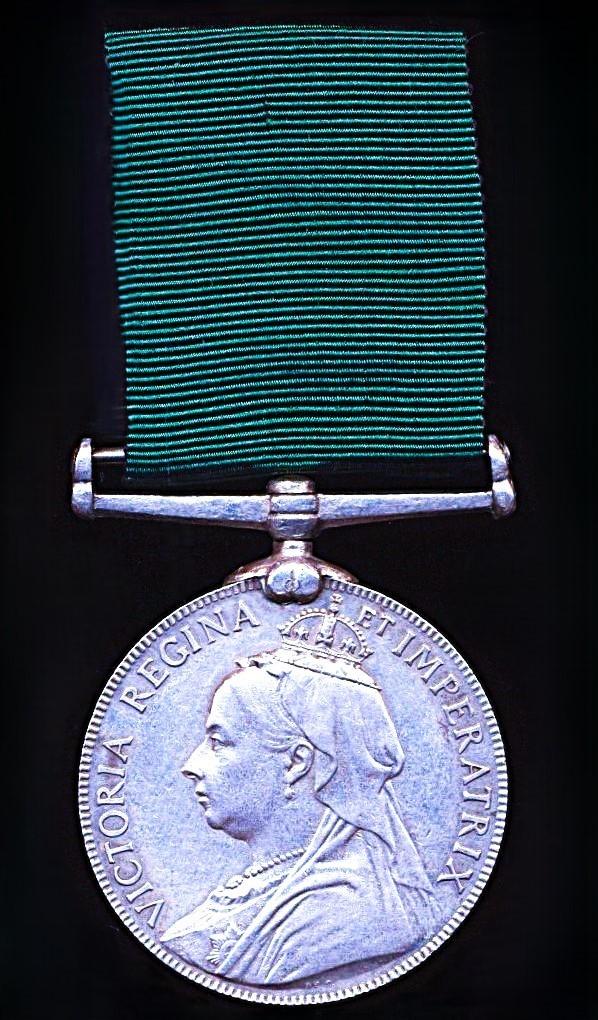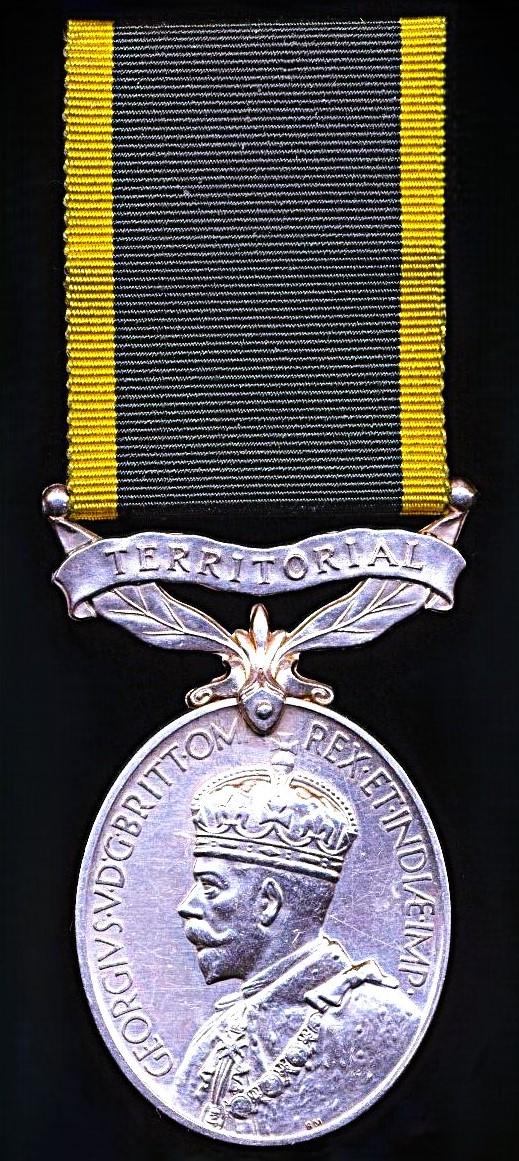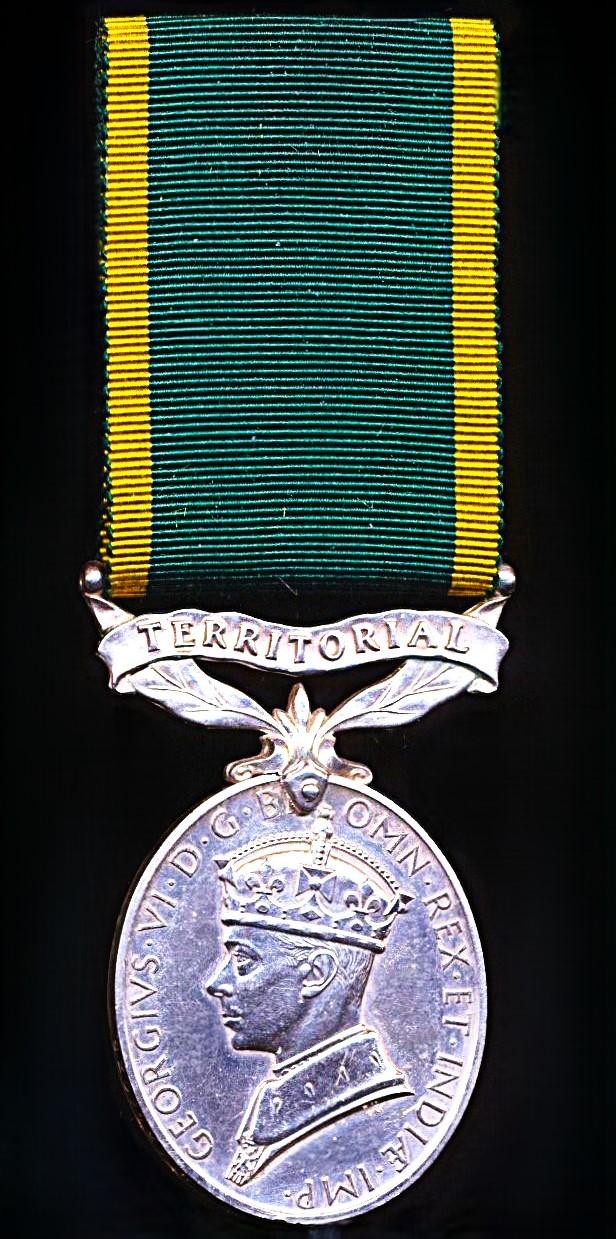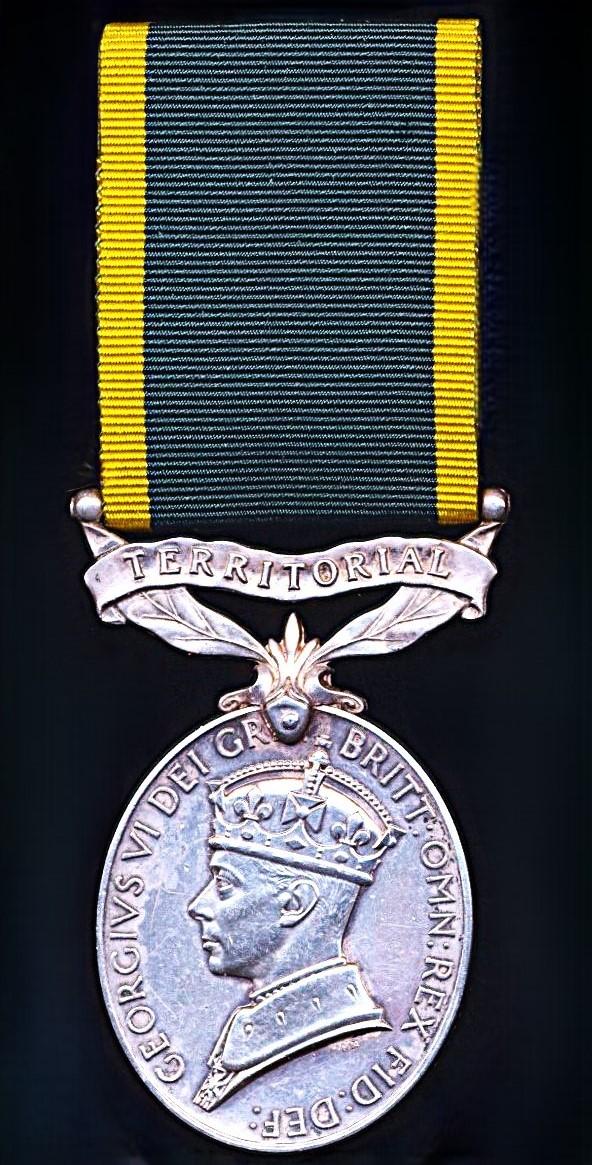Diamond Jubilee Medal (Mayors and Provosts) 1897. In case of issue
The medal suspended from the original riband, this complete with the fitted issue brooch that still retains the original hinged pin and clasp fittings
Contained in original plush leatherette case of issue, The lid bearing the Imperial Crown and dates 1837-1897 in gilt tooled letters
Only an estimated 512 x 'Silver' medals awarded to Mayors & Provosts
... read more
425.00 GBP
Coronation Medal 1902. Mayor's & Provost's issue. In case of issue
Sold together with:
- Original plush red leatherette hinged case of issue.
- The medal riband retaning it's original white metal mounting bar, with hined pin & clasp fittings
A most handsome medal designed by Emil Fuchs and struck by Elkington & Co. Ltd. of London
The case of issue with makers name & address 'Elkington & Co Ltd, 22 Regent St S... read more
245.00 GBP
Volunteer Force Long Service Medal (United Kingdom Volunteer Units). Victorian issue
Un-named as issued
The medal fitted with a long length of original silk riband
Condition: Toned VF read more
65.00 GBP
Volunteer Force Long Service Medal (India & Colonies. GV issue (Serjeant C. M. Mackay-Jameson. A.V. Lt. Horse)
Medal Verification: The award of the medal to Sergeant Charles Mowbray Mackay Jameson, Assam Valley Light Horse, was published in India Army Order No 485 of 1914 (Ref 'The Auxiliary Force India and its predecessors' (Alan Harfield, 2015)
An estimated 79 x VLSM's GV issue were issued - 1910-1917 inc - named to the unit, as 'Assam Vally Light Horse' (and pre-dating all later award... read more
185.00 GBP
Army Long Service and Good Conduct Medal. Victorian issue (538, Gunner J. Little, 1st Bde. R.A.)
Medal Verification: The medal to Gunner John Little is confirmed as entitled, as enumerated in his extant service papers that are held and accessible The National Archives refer)
Confirmed as the recipient's only medal entitlement during his 22 years 'With the Colours'
John Little, was a native of the parish of Shankill, Co. Antrim, Ireland, where he was born circ... read more
Indian Volunteer Forces Officers Decoration,. EDVII issue (Captain J. Tulloch, U.P. Lt. Horse)
The letter 'U' only with correction
The recipient was Captain John Tulloch, V.D, United Provinces Light Horse
Provenance:
- Glendining's, July 1957
- Spink, April 1994
- John M.A. Tamplin Collection, London, June 2009
Reference the standard reference book on the Indian Volunteer Officers Decoration, vide 'The Colonial Aux... read more
675.00 GBP
Volunteer Long Service Medal (India & Colonies). Victorian issue (Sergt H. J. Collins. E.I.Ry: Vol: Rifles)
Medal verification: Sergeant H. J. Collins, of the East Indian Railway Volunteer Rifles, was awarded his VLSM in 1900, the award being published in the Gazette of India issue 512 of 1900
The East Indian Railway Volunteer Rifles had its origins dating back to 1869, when the unit was originally raised. The lineage of the regiment throughout its existence as an auxiliary unit is sho... read more
125.00 GBP
Efficiency Medal. GV issue with 'Territorial' bar (6195821 Pte. F.T. Cane. 8-Midd'x. R.)
An award issued sometime between 1930-1936
The recipients' unique Army Number is from the block 6188001-6278000 allocated to the Middlesex Regiment in 1920, from which army numbers were awarded sequentially to all enlistees - regulars and reserves - who were posted to the Middlesex Regiment in the period circa 1920-1941
Prior to the Second World War, the Middlesex ... read more
65.00 GBP
Efficiency Medal. GVI issue, 1st type obverse legend with 'Territorial' bar (6207127. Pte. R.J. Tapsfield. MX.)
An award issued sometime between 1936-1947
The recipients' unique Army Number is from the block 6188001-6278000 allocated to the Middlesex Regiment in 1920, from which army numbers were awarded sequentially to all enlistees - regulars and reserves - who were posted to the Middlesex Regiment in the period circa 1920-1941
Prior to the Second World War, the Middlesex ... read more
65.00 GBP
Efficiency Medal. GVI issue, 2nd type obverse legend with 'Territorial' bar (2984135 Pte. H. Campbell. MX.)
An award issued sometime between 1947-1952
The recipients' unique Army Number is from the block 2966001-3044000 allocated to the Argyll and Sutherland Highlanders in 1920, from which army numbers were awarded sequentially to all enlistees - regulars and reserves - who were posted to the Argyll and Sutherland Highlanders in the period circa 1920-1941
Prior to Privat... read more




